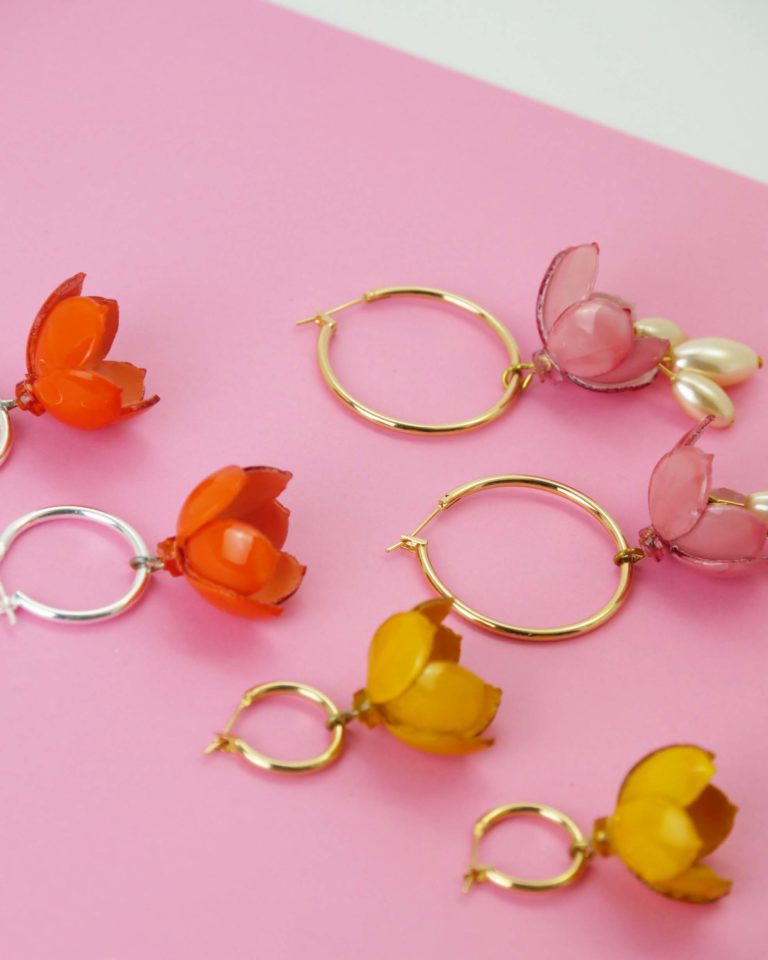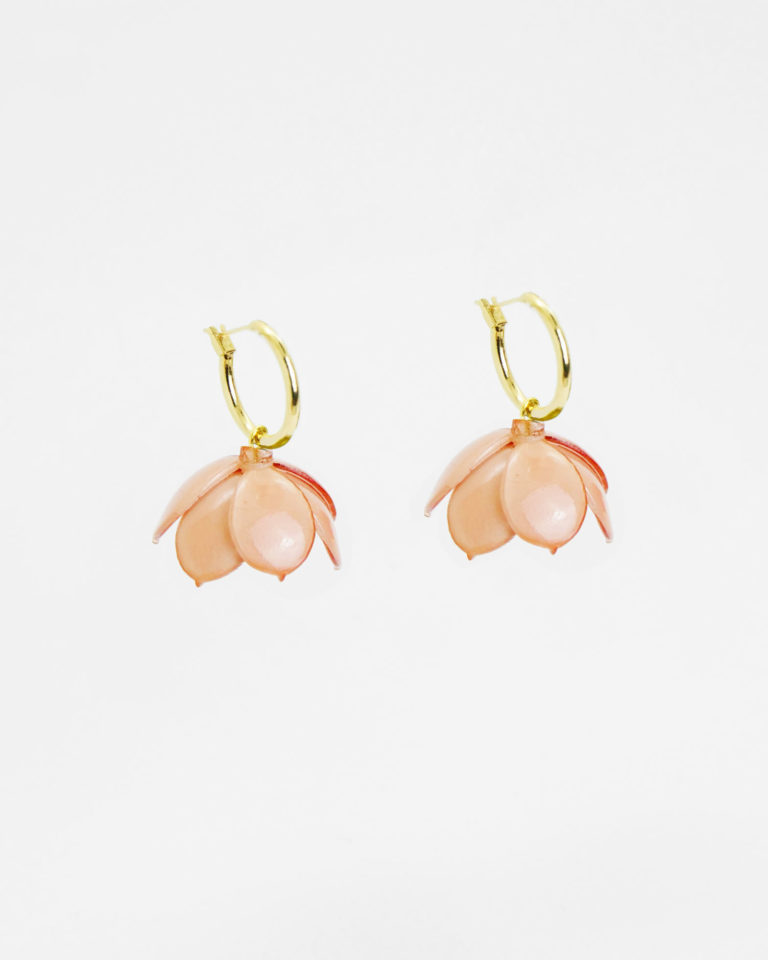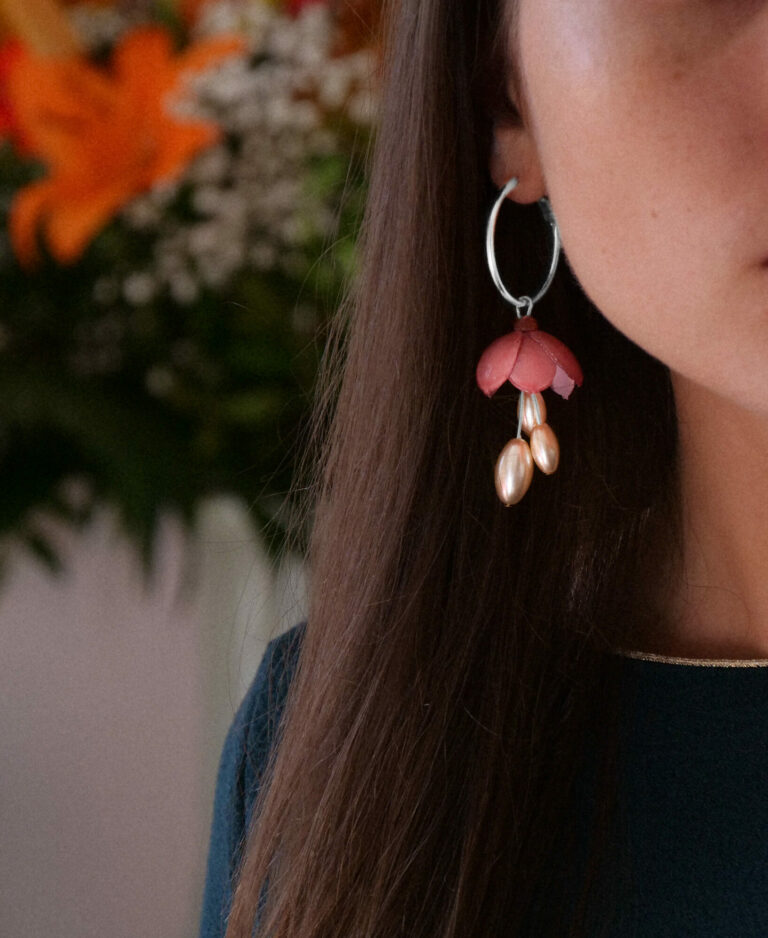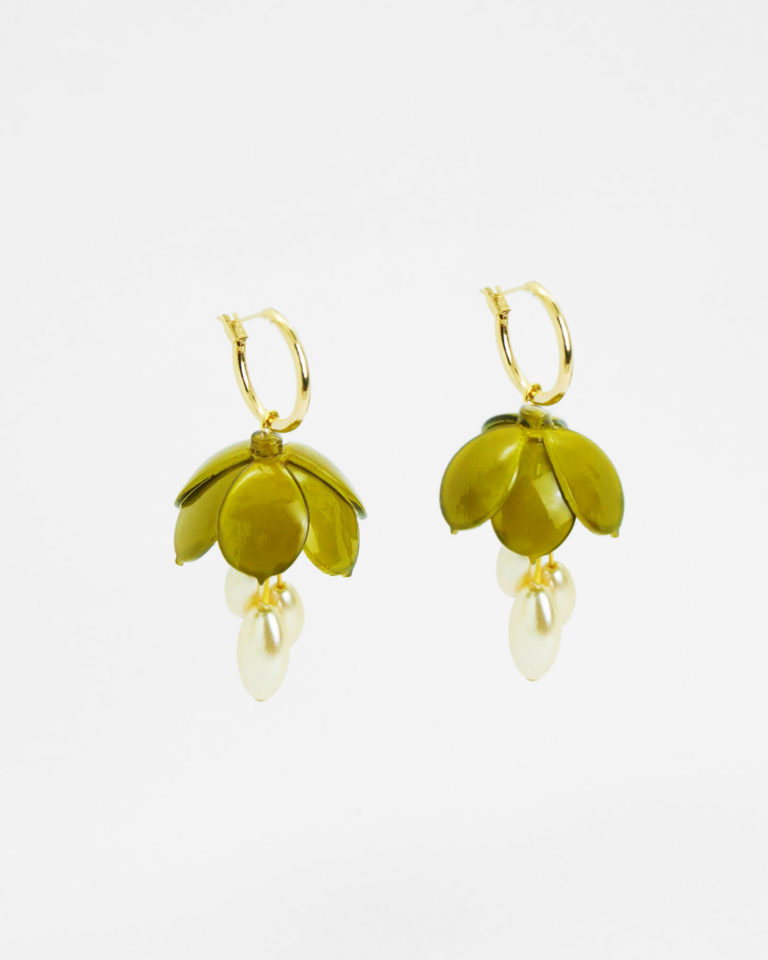
Behind each of our jewels hides a story. From the iconic Anemone to the Barnum feline curls, each little creation tells in itself a quantity of errors, improvisations, rowdy outcomes or great history that reaches the little one. Let yourself be carried away by each story to learn more about the Ciléa universe; this month, here is the fabulous story of Cécile Creoles!
MISLEADING SUN
Our Cécile curls were born under a deceptive sun. In the middle of January 2005, the sun shone on the faces of passers-by and the workshop was busy working to complete the creation of the summer collection. Stéphane Ravel, the creator, took in his hand four elements of Émaline lying in a storage bin and he assembled them. After several inconclusive tries, he bent the petals he had just picked up and obtained a small flower that was unlike any other created before. But the addition of leaves became more complex and Stéphane left the little flower aside.
THE BIG HISTORY
A few years later, Ambre, Stéphane’s daughter, joined the Ciléa adventure. Wishing to breathe new life into the workshop, she suggested assembling golden hoops with new jewelry. This type of earring has a very rich history and continues to be worn almost 5000 years after its creation! And yes, creoles seem to have been invented in the 3rd millennium BC, after jewelry of this shape was discovered in Sumerian tombs, present-day Iraq. It would therefore seem that the creoles are part of the oldest jewelry ever discovered.
Originally, earrings, regardless of their shape, were to provide protection to their wearer. This is why men and women wore hoops in Ancient Egypt. They symbolized then the wealth and the beauty for this people. The pharaohs were also buried with their creoles in order to perfect their beauty and their attractions in the afterlife. However, on the side of the Roman people, there was initially a certain distrust of these little gems. But this first judgment quickly faded to become a trend there too, to such an extent that even Julius Caesar wore it!
Then, the creoles reappear in the days of slavery, since only they were authorized to be kept and worn. They quickly became the only material asset they kept during their deportation from their native land to the Americas. They then take on a strong identity symbol, and then adopt the name of Creoles in French, in tribute to the Creole people, victims of slavery.
Subsequently, the Creoles will be quickly adopted by the navies, thus becoming a symbol of a real bad boy.
Then, in the 60s, these little curls again emerged especially among African-American women. Wishing to honor their past and their attachment to their culture, they are displayed with these little symbols in their ears. They became a true symbol of female power, as in Joséphine Baker, Angela Davis or Tina Turner, who particularly liked them.
Then, with the 80s, the shape of the hoops changes to become more imposing. They are then compared to “knockers”, a reference to the massive character of this accessory used to knock on doors.
Each region of the world today has its rites and customs and styles of Creoles, whether in India, South America or Europe. They became fashionable again in the 80s and are making a comeback again today.
Josephine Baker
ASSEMBLY
Nourished by this historical richness, the Ciléa workshop is now seeking to find a supplier for the creoles it wishes to offer. In this regard, one condition is particularly important to him; the origin of the material. Much research then focused on making French creoles, in line with the philosophy of the workshop. The choice will fall on a French company, based in the north of France, which manufactures silver, gold and gold plated hoops. Then, Ambre chooses to name them according to the first name of her aunt, who represents for her a real pillar. Is there a greater satisfaction in creating for loved ones?
And now, voila ; CÉCILE hoops are born!






